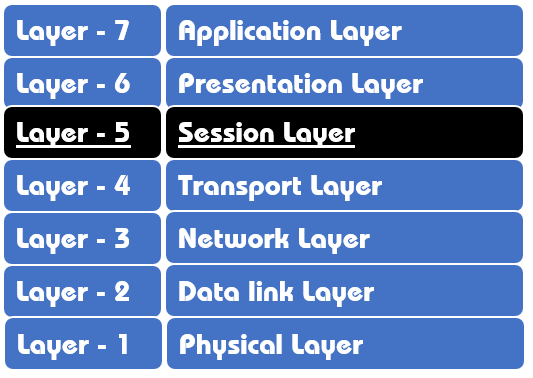Introduction
The fifth layer of the osi reference model is Session layer. It is responsible for initiating and the setup and teardown of connections.
When the first three layers are not sufficient for some processes the session can be useful. The session layer controls the connections between the computers. The session layer is also responsible for distinguishing among multiple network connections, making sure that the data is sent across the correct connections as well as taking data from a connection and forwarding it to the correct local application.
To set up connections the session layer communicates with the transport layer. It establishes, synchronizes the interaction between the communicating hosts. It provides full duplex or half duplex communication. It is also responsible for error reporting of any issues at the application, presentation, and session layers and for implementing any type of class of service to give preference to some types of traffic over others.
This layer basically establishes a connection between the session entities. This layer handles and manipulates data which it receives from the transport Layer as well as from the Presentation Layer. It defines how to start, control and end a session, including the control and management of multiple bidirectional messages so that applications can be notified when only a portion of a continuous message has been completed. See the image below.

Functions of session layer
- Establish a connection between session units.
- Map the session address to the shipping address.
- Responsible for error reporting and recovery.
- The sessions Layer is responsible for receiving data information from transport layer and sends it to presentation layer.
- It uses checkpoint from where the data can be retransmitted despite retransmitting from the start.
- Theis layer supports full-duplex and half-duplex operations.
- Sessions are most commonly implemented on Web browsers using protocols like Zone Information Protocol, AppleTalk Protocol, etc.
Session layer protocols
- AppleTalk Data Stream Protocol (ADSP)
- AppleTalk Session Protocol (ASP)
- Call Control Protocol for Multimedia Communication (H.245)
- OSI session-layer protocol (X.225, ISO 8327) (ISO-SP)
- Network Basic Input Output System (NetBIOS)
- Password Authentication Protocol (PAP)
- Point-to-Point Tunneling Protocol (PPTP)


